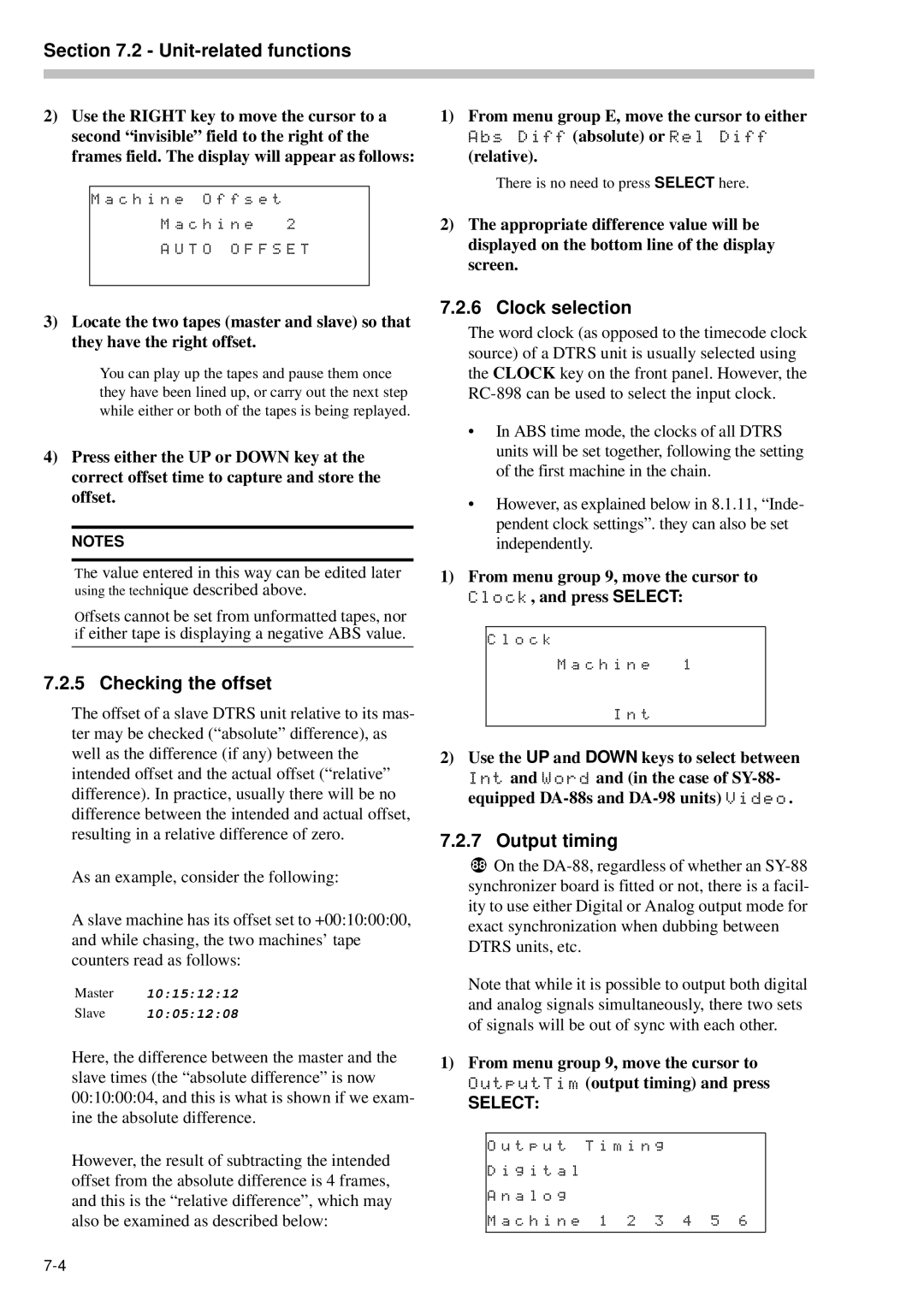
Section 7.2 - Unit-related functions
2)Use the RIGHT key to move the cursor to a second “invisible” field to the right of the frames field. The display will appear as follows:
M a c h i n e O f f s e t
M a c h i n e 2
A U T O O F F S E T
1) From menu group E, move the cursor to either
Abs Diff (absolute) or Rel Diff
(relative).
There is no need to press SELECT here.
2)The appropriate difference value will be displayed on the bottom line of the display screen.
3)Locate the two tapes (master and slave) so that they have the right offset.
You can play up the tapes and pause them once they have been lined up, or carry out the next step while either or both of the tapes is being replayed.
4)Press either the UP or DOWN key at the correct offset time to capture and store the offset.
NOTES
The value entered in this way can be edited later using the technique described above.
Offsets cannot be set from unformatted tapes, nor if either tape is displaying a negative ABS value.
7.2.5 Checking the offset
The offset of a slave DTRS unit relative to its mas- ter may be checked (“absolute” difference), as well as the difference (if any) between the intended offset and the actual offset (“relative” difference). In practice, usually there will be no difference between the intended and actual offset, resulting in a relative difference of zero.
As an example, consider the following:
A slave machine has its offset set to +00:10:00:00, and while chasing, the two machines’ tape counters read as follows:
Master 10:15:12:12
Slave 10:05:12:08
Here, the difference between the master and the slave times (the “absolute difference” is now 00:10:00:04, and this is what is shown if we exam- ine the absolute difference.
However, the result of subtracting the intended offset from the absolute difference is 4 frames, and this is the “relative difference”, which may also be examined as described below:
7.2.6 Clock selection
The word clock (as opposed to the timecode clock source) of a DTRS unit is usually selected using the CLOCK key on the front panel. However, the
•In ABS time mode, the clocks of all DTRS units will be set together, following the setting of the first machine in the chain.
•However, as explained below in 8.1.11, “Inde- pendent clock settings”. they can also be set independently.
1)From menu group 9, move the cursor to Clock, and press SELECT:
C l o c k
M a c h i n e 1
I n t
2)Use the UP and DOWN keys to select between Int and Word and (in the case of
7.2.7 Output timing
88On the
Note that while it is possible to output both digital and analog signals simultaneously, there two sets of signals will be out of sync with each other.
1)From menu group 9, move the cursor to OutputTim (output timing) and press
SELECT:
O u t p u t | T i m i n g |
|
| |
D i g i t a l » | » » » » | » | ||
A n a l o g |
|
|
|
|
M a c h i n e 1 | 2 3 | 4 5 6 |
| |
|
|
|
|
|
